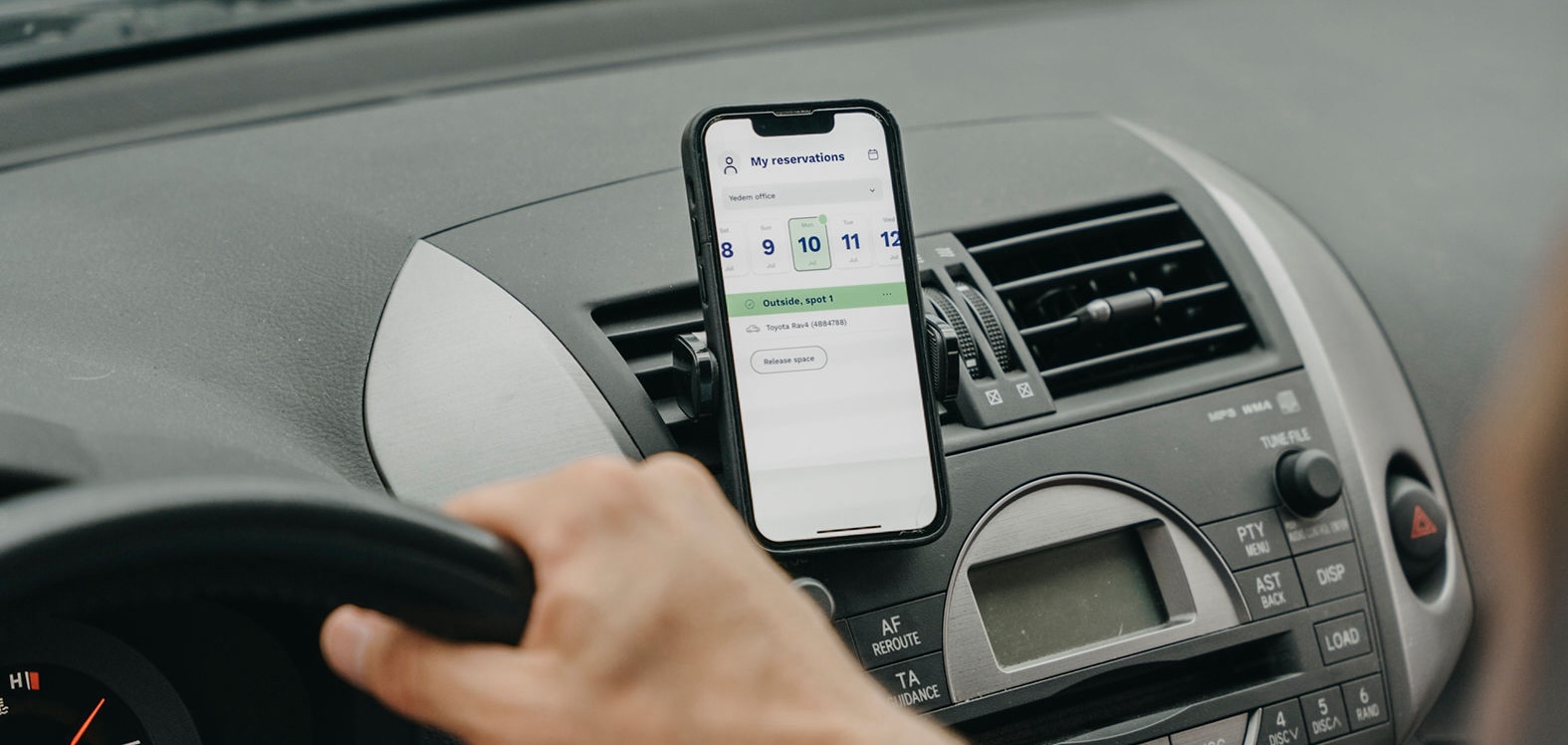
Matěj Ballo | October 3, 2022 | 7 minutes read
Urban planning and development is steering away from car-centric planning, while traveling to work is one of the most frequently needed reasons for people to get in their cars. How can companies cope with this and keep employees happy?
Steering out of a car-centric era
On the topic of the green future of cities and mobility, there is a lot of buzz about electric vehicles, micro mobility and 15 minute cities. But what about parking? It may not seem like the juiciest topic on the block, however it is of central pertinence, not to just urban planning and mobility, but also quality of life and climate change issues.
We are in the hangover of a car-centric era as urban planners, policy makers, and innovators in the private sector try to dismantle the implications it has left, like urban sprawl, long travel times, congestion, pollution, and poor utilization of urban space. Increasingly, more cities are restricting and banning cars from their urban centers while providing alternative modes of transport, like expanding and improving public transport networks and shared mobility solutions that are newly enabled by mobile apps.
Another very effective way to gauge traffic flow in a city is how space is allocated to parking; less parking tightens the gate for more traffic. The average car is parked about 95% of the time and there are a lot of cars in our cities that aren’t moving. In London, parkings takes up about 14 km2 which is the equivalent of about five Hyde Parks. In Berlin, parked cars take up even more – 17 km2.
Sure enough, we see cities dialing back parking supply as they try to move to greener urban pastures, both by trimming out existing parking and lightening or even eliminating parking requirements on new developments.
- Amsterdam: on route to remove 11,200 parking spaces from its streets by the end of 2025, while it has been lightening parking requirements on new developments since the ‘90s.
- Paris: announced it is removing half the city’s entire 140,000 parking spaces in 2020.
- Oslo: removed all of its 760 parking spaces from its innermost city in 2019.
- Copenhagen: as a trial pilot, removed 66 parking spaces from its central district in 2021 which proved to be a popular move.
- Prague: in 2021 removed parking minimums in effort to make apartments more affordable.
Not only does lightening the parking load in an urban space discourage the flow of traffic, it creates space for other things, like more mixed use developments, parklets, more flora to line our streets to help remedy summer heat waves, and all those things we love. But, we can’t ever dispose of cars completely, nor can we expect to hold our breath waiting for alternatives. Cars are a huge part of reality today for many and they will always be part (albeit reduced) of a green, urban mobility mix.
Offices: a big reason to drive, a big reason to park
For work sectors that allow working from home, the pandemic raised a lot of questions about where this leaves the future of the office while opening the door to more home office allowance, a trend that was growing before the pandemic. However, work commuting–whether it is by choice or employment policy–still makes up a very substantial reason to travel.
Uk.gov’s annual 2022 Domestic Travel report shows that work-related commuting was the most common reason for citizens to travel, making up 28% of all journeys. In the EU, 2022 data shows a similar case: traveling to work makes up the largest reason to travel after shopping. While both figures account for work commutes made by any mode of travel, cars in cases make up the largest share of transport modes used, at 46% in the EU and at 68% in the UK.
Compared to other travel reasons, work commuting calls on car use most, totalling to nearly three quarters, more than other reasons to travel. Other reasons for travel, like shopping and leisure, can have a more fluid destination and lend a bit more flexibility to sync that journey up with another and even take another alternative mode of transport–but work as a destination and commute is much more rigid and needs to be provided for.
As many cities shift away from car-centricity, such as by leveraging 15-minute city planning concepts and adopting new alternative mobility, like improved public transit, micro mobility and demand responsive transport, it is easier to compromise and adjust one’s journey. However, work destinations are more fixed than other destinations and reasons to travel therefore less likely to fit into that scope.
Office parking: a testing balancing act
Where does this leave the future of office parking and companies who want happy, sustainable commuting for employees? City authorities are undergoing indefinite parking diets to meet sustainability targets and use that space for other competing needs. Office space developers are less regulated to provide office parking, while people are still very much using cars to commute to the office.
Office parking is put in a tight corner until–and if ever–everyone can be serviced by shared and public transportation to get to work. To solve this puzzle, office space managers and employers need to adopt smart parking management solutions. Just as we reserve so many things in our lives in advance, employees can reserve parking spaces in advance and therefore optimize use of parking space and planning their week and commute.
Parking management systems: an easy win for space use and happier people
With a parking management system, offices can ensure that parking spaces are used efficiently by spreading out the flow of parking demand by issuing reservations in advance while also connecting employees to underutilized parking spaces that have been unknown. From here, parking space utilization can be better understood and improved with data collected. If there isn’t enough parking inside the parking space, that demand will start leaking outside as employees and office guests start imposing on other space to the dislike of neighbors and city authorities.
Moving away from the ‘first come first serve’ model allows for happier and more punctual employees. It erases the guessing game if they’ll be able to find parking or not, the waste of time and energy circling parking lots in search of space, and makes it more fair to employees who may not hold a competitive start in the ‘first come first serve’ game–for example should they regularly need to drop off a child before work or have a responsibility of the sorts. It also accommodates and better organizes the growing need for parking with EV charging capacities.
Lastly, parking management systems give the opportunity to reward carpoolers with parking priority.
Necessity is the mother of invention, and we need a lot of things: smarter use of urban space, greener cities, and happier citizens and employees. There may not be a silver bullet solution to this all, but getting smarter about how we use office parking space is a smart step forward that can bring a lot of wins to the table.
